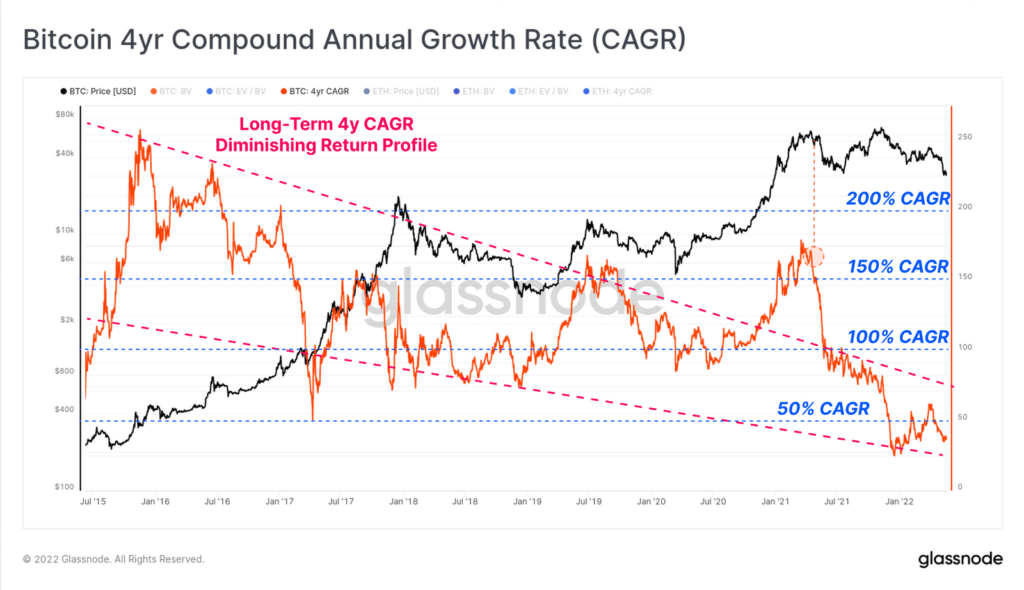The world’s two largest cryptocurrencies – Bitcoin and Ether – have been closely following each other in the recent market fall. Over the last few years, market analysts have been arguing that Ether has been outperforming Bitcoin for a while.
However, on-chain data suggests that Bitcoin has performed relatively better than Ethereum, especially during the bear market. In the short term, the monthly return profiles for BTC and ETH have been underwhelming.
As per data from Glassnode, Bitcoin gave a negative 30% return over the short term meaning it corrected by 1% on average on a daily basis. This negative return is quite similar to the previous bear market cycles for Bitcoin.
On the other hand, the monthly return profile shows Ethereum gave a relatively poorer performance of -34.9%. It also shows that the performance correlation between these two assets remains relatively strong.
Comparing Long Term Bitcoin and Ether CAGR
Let’s take a long-term view of the performance of these assets in a typical 4-year bull/bear cycle. Both BTC and ETH have given diminishing returns over the long term. Bitcoin’s CAGR has declined from 200%+ in 2015, to less than 50% today.
Trending Stories
Similarly, Ethereum also seems to experience diminishing returns over time. As Glassnode explains:
ETH has generally outperformed BTC during bullish trends, however, these divergences do appear to be getting weaker over time (lower upwards divergences). In more bearish trends, it can be seen that the ETH CAGR often tends to underperform BTC.
Considering the severity of the bear over the last 12 months, “the 4yr CAGR for both assets has declined from around 100%/yr to just 36%/yr for BTC, and 28%/yr for ETH”.

The typical characteristic observed is that during the early-mid stage bull markets, BTC dominance declines as investors seek exposure to other risky altcoins for better rewards. However, in an earlier stage bear market, the risk appetite declines substantially and money moves back to safer assets such as Bitcoin.


